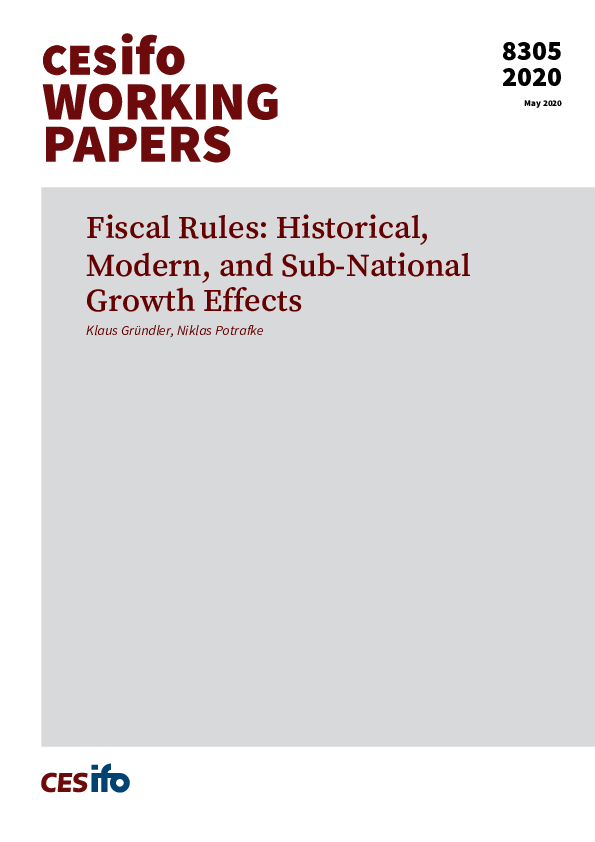Fiscal Rules: Historical, Modern, and Sub-National Growth Effects
CESifo, Munich, 2020
CESifo Working Paper No. 8305

We examine how fiscal rules influence economic growth. The results show that constitutional fiscal rules promoted growth from the Industrial Revolution until World War II (1789–1950) and also increased modern economic growth (1985–2015). To address selection on unobservables, we conduct a large-scale international survey among 1,224 economic experts in 109 countries. We exploit cross-country differences in expert preferences as an instrumental variable for the adoption of constitutional fiscal rules. The results show that the cumulative long-run effect of permanently adopting constitutional fiscal rules on real per capita GDP is 18%. As a complementary strategy to tackle unobservables, we examine sub-national fiscal rules, em-ploying a newly collected dataset of 206 regional governments from 10 federal states (1992–2012). The results show that fiscal rules also increased economic growth at the sub-national level.
Public Finance
Fiscal Policy, Macroeconomics and Growth